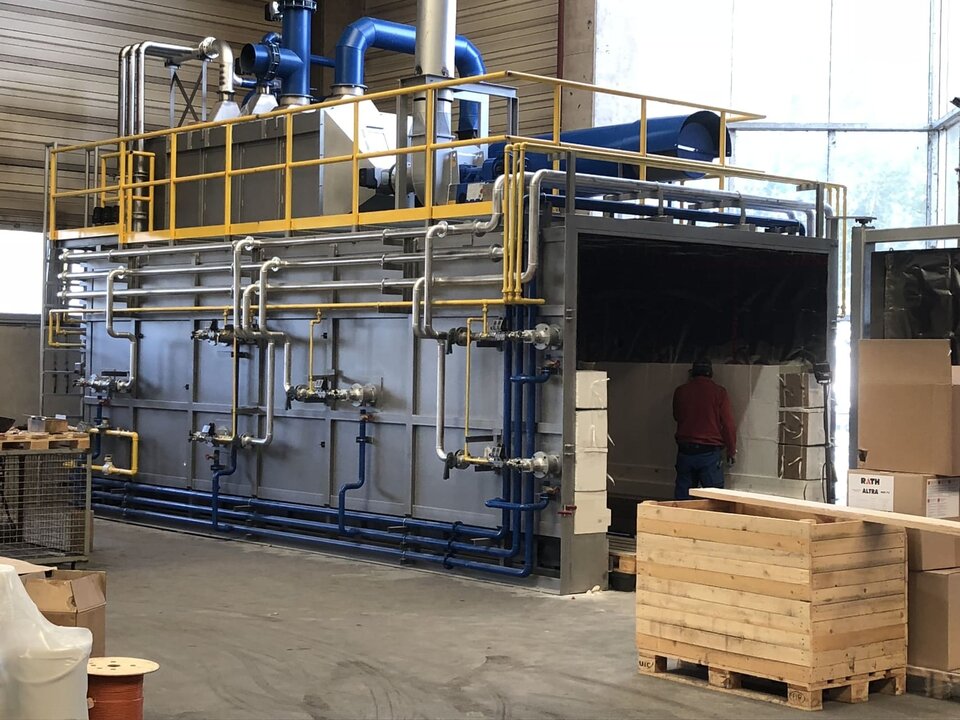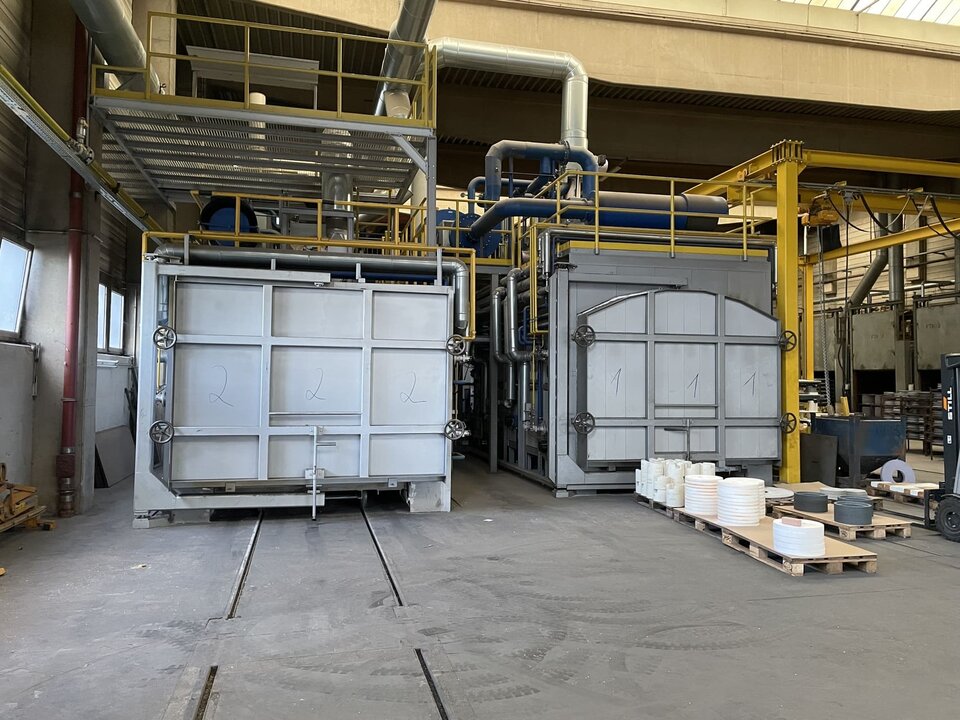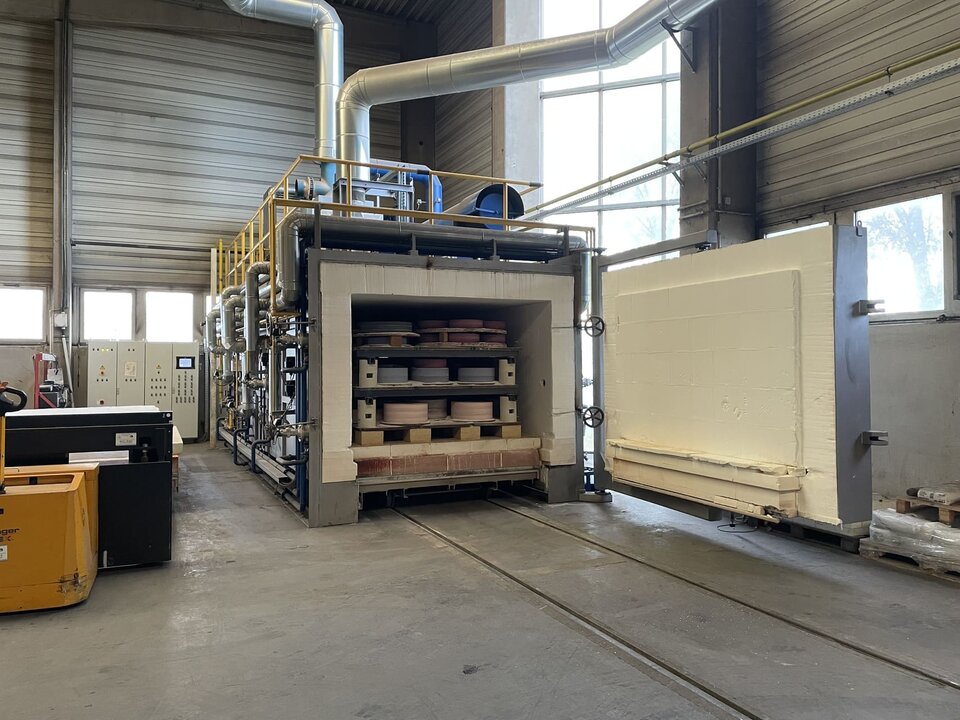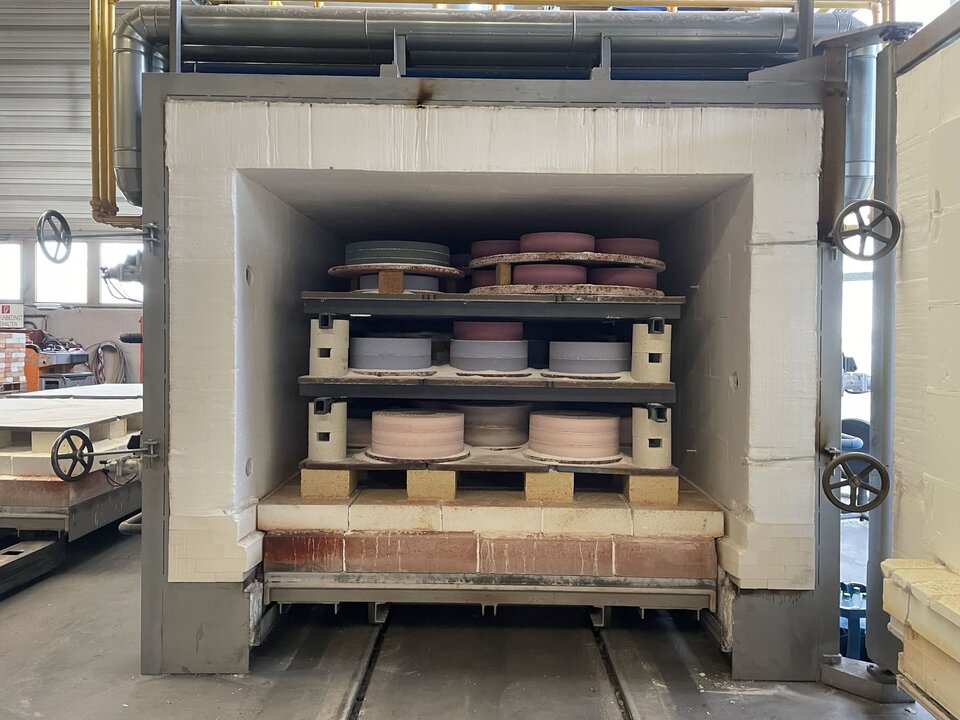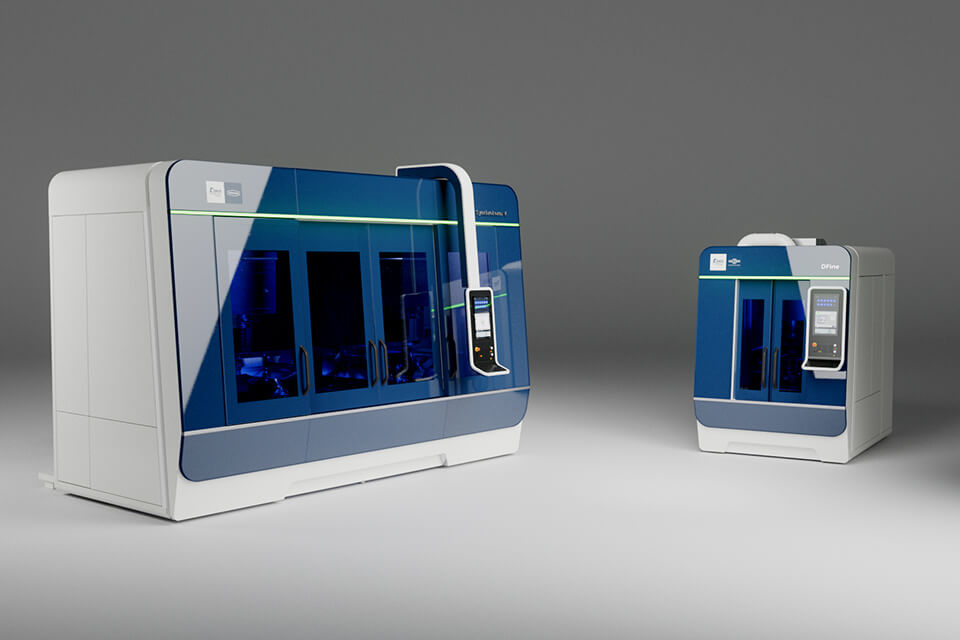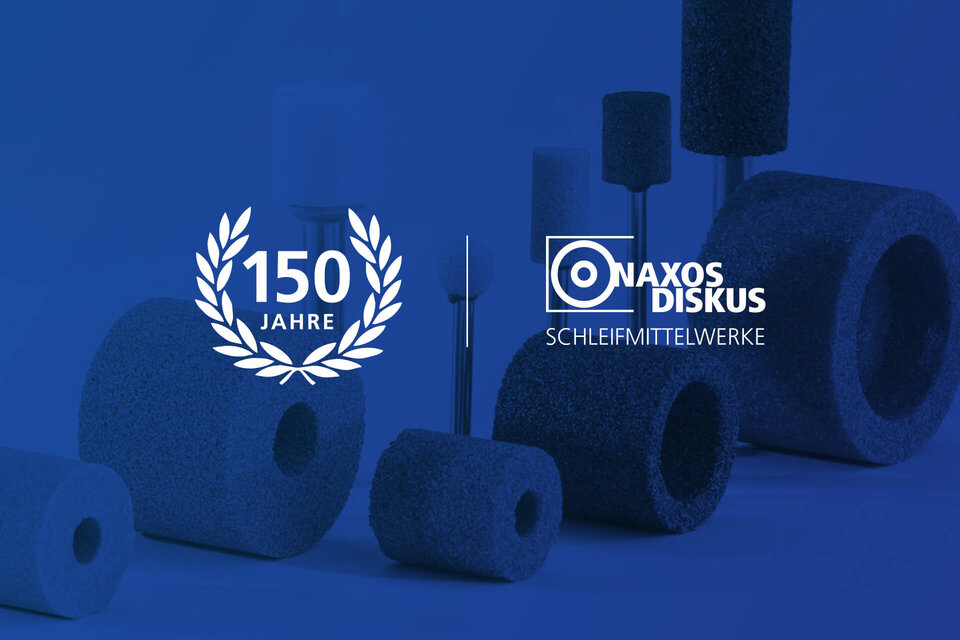1989 was a special year for the then Naxos-Union: the move to the site in Butzbach, which is still in operation today, was imminent and with it the move into what was then the most modern abrasives plant in Europe. A highlight of the 22,357m² plant area: the 80-meter-long tunnel kiln, the most modern firing technology of its time.
However, this giant‘s energy requirements were also of enormous proportions: at a firing temperature of 1,260° Celsius, the pusher kiln consumed 6.7 million kWh of gas per year and 1,475 tons of CO2 - more than three decades later, a more than outmoded balance. NAXOS-DISKUS therefore decided to drastically optimise this in two ways: by converting the technology to smaller individual kilns, and by optimising the firing process itself.
Dismantling the tunnal kiln alone produced figures that give an idea of the magnitude of the project: More than 124 tons of scrap metal, 303 tons of building rubble und 14 tons of insulation material had to be properly disposed of.
The savings in gas energy due to the conversion to a total of three individual furnaces and the additional savings due to fire optimisation measures are, however, equally impressive: in total, NAXOS-DISKUS has now been saving 6,030,000 kWh and 1,326.6 t of CO2 year after year since 2019.
The technological change in abrasives burning is certainly by far the biggest, but by no means the only factor towards more energy efficiency and sustainability at NAXOS-DISKUS. Replacing all lights on the more than 22,000 m2 factory floor space with LEDs has a high effect on energy consumption - and also on lighting quality. By further developing the burning technology to lower temperatures of 900-970°, even more energy-saving potential will be realised in Butzbach in the medium-term.


